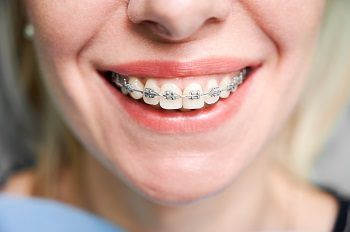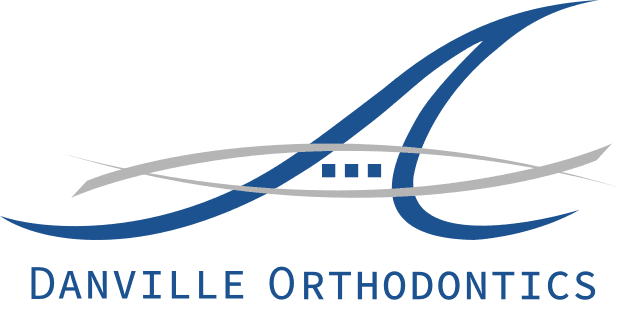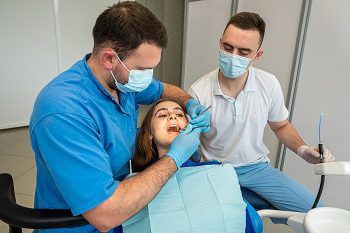Adult orthodontics: should adults get braces?
Kids and teenagers frequently wear braces to straighten their permanent teeth. But with time, teeth can move back into their original positions, leading to crooked teeth. This also occurs if you don't wear a retainer every day. Because of these difficulties, many individuals seek adult orthodontics treatment if they have a severe bite and crooked teeth that worsen with age.
Adults are getting orthodontics like never before. According to a survey by the American Association of Orthodontists (AAO), the percentage of adults over 18 who use braces has increased by 14% in the last three years. With that, more than a million adults in the United States wear braces.
American Association of Orthodontists also states that:
“One in five orthodontic patients is an adult. Adults seek treatment mainly to improve their smile and boost their confidence. Proper teeth alignment also promotes your oral health and overall health”
Adults of all ages can benefit from braces or aligners. Adults may also seek therapy to straighten their teeth after having dental crowns, implants, or veneer procedures.
If you are facing the following misalignment issues, you could benefit from adult orthodontics treatment:
- Crooked teeth
- Teeth crowding
- Tooth misalignment or spacing (diastema)
- Overbite
- Underbite
- Bite open
- Facial or jaw irregularities
- Deep bite
What is the difference between adult orthodontics and childhood orthodontics?
Children aged 10 to 14 are the most common age group for orthodontic treatment. During adolescence, tooth crowding and bite or alignment difficulties are also visible, making it a perfect time to wear braces.
The main distinction between adult and pediatric orthodontics is that adult orthodontics offers fewer treatment possibilities. If necessary, you might employ different devices when you get braces as a child or teenager. These devices are examples of headgear, space maintainers, and palatal expanders.

Types of Adult Braces
According to Mina Abdolahi, DDS, MS, an associate at Saba Orthodontics, adults obtaining braces today have many more alternatives than they did when they were younger. The options can be overwhelming. They comprise:
- Conventional braces
Traditional metal braces are a cost-effective and efficient treatment method. Metal braces, among other things, correct severe or minor tooth crowding, most bite abnormalities, and spaced teeth.
Metal braces have gold or silver brackets with o-shaped rubber bands that tie around each one. Traditional braces are also long-lasting, sturdy, and resistant to most treatment forces.
- Aligners
Clear aligners are a new and popular orthodontic treatment option. Because they are nearly undetectable and removable, these aligners are an excellent choice for younger and older persons. The most well-known and trustworthy brand is Invisalign.
Although transparent aligners provide several advantages, the most significant negative is that their maintenance is complex. Moreover, you must keep them on for at least 22 hours per day. Furthermore, getting a new set of aligners is essential every one to two weeks.
- Lingual braces
Lingual braces are metal braces as well. They are the least noticeable metal braces, but they might be more unpleasant due to their proximity to your tongue. However, instead of being attached to the front of your teeth, they are placed on the back of your teeth.
- Self-ligating braces
Self-ligating braces have a little metal clip on the bracket through which the wire travels. Due to this reason, these braces do not require elastic bands to assist in moving the teeth.
Advantages of Adult Braces
The primary benefits of adult braces are:
- They improve the appearance of teeth, facial structure, and self-confidence.
- Braces not only enhance your dental health but also improve your overall health. Straight teeth, in particular, are easier to brush and floss, which aids in the prevention of dental decay and gum disease. Furthermore, if your teeth and gums are healthy, so will your body.
How much do adult braces cost?
Orthodontic procedures are frequently partially covered by dental insurance. However, it's vital to examine the coverage criteria. The type of device utilized, your current health status, and the initial condition affect the price of orthodontic treatment. Dental insurance provider Delta Dental states on its website that the average cost of orthodontic treatment is between $5,000 and $6,000. A typical course of treatment with Invisalign's clear aligners is expected to cost between $3,000 and $8,000.
How to manage your treatment?
Depending on the severity of the issue and the appliance type used, a typical orthodontic treatment plan lasts between 18 and 22 months. Although adults are typically quite motivated to use the device religiously, the length of therapy with aligners depends on this.
During a course of treatment, more than one device can be utilized. For instance, a person might start with an aligner and wear it for a few months before upgrading to traditional braces.
Your orthodontist will take a thorough medical history before beginning orthodontic treatment. An orthodontist must know about your medications for low bone density or whether you have them since teeth must move through living bone during orthodontic treatment. Since women are more likely than men to need orthodontic treatment as adults and are more likely to be afflicted by low bone density, the problem mainly affects women.
Conclusion
Adult braces are becoming increasingly popular and show no signs of easing. Technology provides options for various lifestyles and ways to swiftly and effectively finish treatment.
It is never too late to address orthodontic issues! Malocclusion can worsen if untreated, and the following difficulties go beyond aesthetic ones. Therefore, consult your orthodontist about your treatment options if you want to straighten your teeth.
Contact your Danville dentist, Dr. Hoss Abar, DDS, MSD at Danville Orthodontics to learn more about Adult orthodontics.
Resource:
Orthodontic Treatment Options For Adults
This media/content or any other on this website does not prescribe, recommend, or prevent any treatment or procedure. Therefore, we highly recommend that you get the advice of a qualified dentist or other medical practitioners regarding your specific dental condition.

